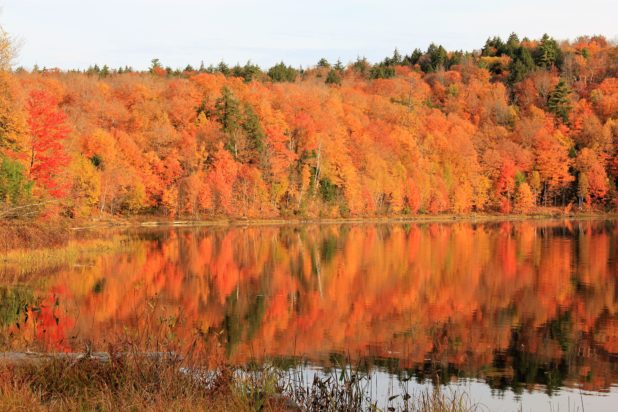Commentary
The economy of trees
October 9, 2018

Oct. 9, 2018
By Nate Smelle
OFTEN when people think about the economic value of trees, they measure it in terms of the quantity and quality of timber which can be harvested from a forest. Touring Hastings County over the weekend to check out the fall colours with a friend, we wound up wedging ourselves between a pair of rocks immersing ourselves in the orange, green, yellow and red beauty of the season discussing the seemingly endless number of other ways these magnificent living organisms add value to our lives.
Sitting there on the stones, reveling in the vibrancy of autumn’s annual exhibition, we noticed several carloads of people arriving periodically to appreciate the same seasonal spectacle as us.
Having just returned home from B.C., my friend described to me how the towering tree-line that defines the majority of the west coast had helped to shape her experience. Listening to her explain how meaningful her time there had been – largely because of the trees, the animals that live amongst them, and the ocean breeze filtered by them – I recalled feeling the same way when I lived there back in 2005.
As we reminisced on our explorations, I felt compelled to consider how different and empty our two separate encounters with this sacred place would have been without the trees that had imprinted on our memories so deeply.
During my time as a canopy tour guide at the Haliburton Forest and Wildlife Reserve, I was lucky enough to have spent hundreds of hours 70 feet above the forest floor sitting in, and walking through the treetops. Being alone in the canopy and swaying with the trees as the wind made them dance is an experience I’ve yet to adequately describe in words how humbling and awe-inspiring finding oneself in that position truly is. I did however experience a similar level of wonder in many of the tourists that ventured into the canopy with me.
On one occasion after climbing down from the tour with a group from India, I remembered hearing a whimper coming from behind me on our hike back to the canoe. Turning around to make sure everybody was okay, I noticed that one of the guests, a girl approximately 13 years old, had tears running down her face. Assuming that something had gone wrong, I went over to her to make sure that she wasn’t hurt. When I asked her why she was crying I also noticed she was smiling.
Recognizing my confusion, she said “I’m okay, I’ve just never been in a forest before.” She went on to tell me about how where she lived there were very few trees, and how all the trees in her community were only about 10 feet tall with a trunk no more than two inches in diameter.
As much as I enjoyed being in this realm every day throughout the spring, summer, and fall for the few years I worked there, I realized at that precise moment how privileged I was to jokingly call this place my office.
Last weekend I had the chance to speak with another family from Toronto earlier who had brought their relatives from China to the Bancroft area, specifically to observe the colourful changing of the seasons upon us. Seeing how excited they were for their “adventure into the wilderness,” it occurred to me how unlikely it would have been for them to choose North Hastings as a destination for their family vacation if it weren’t for the abundance of beauty that abounds when the trees drop their leaves to feed their roots at this time of year.
Take away the trees and replace them with suburbs, strip malls and factories and what do we have? The same boring and monotonous landscape that the tourists, which feed our local economy are trying to escape. Without even taking into consideration the dynamic and diverse array of life-giving ecosystem services trees constantly provide us with for free, you don’t need to be a Nobel Prize winning economist to understand the profound significance of the contribution trees make to our community and our future.


















